Table of Contents
Come join us now, and enjoy playing your beloved music and browse through great scores of every level and styles!
Can’t find the songbook you’re looking for? Please, email us at: sheetmusiclibrarypdf@gmail.com We’d like to help you!
Sorabji: In the Hothouse (from Two Piano Pieces) sheet music, Noten, partitura, spartiti 楽譜

Best Sheet Music download from our Library.

Please, subscribe to our Library.
If you are already a subscriber, please, check our NEW SCORES’ page every month for new sheet music. THANK YOU!
Browse in the Library:
Or browse in the categories menus & download the Library Catalog PDF:
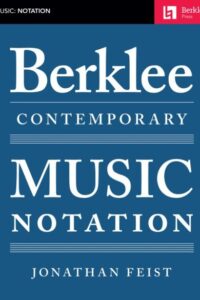
Who was Sorabji?
Kaikhosru Shapurji Sorabji: The Hermit of Modernist Maximalism
In the often-crowded pantheon of 20th-century composers, Kaikhosru Shapurji Sorabji (1892-1988) occupies a unique and enigmatic niche. A composer of staggering ambition, labyrinthine complexity, and self-imposed isolation, Sorabji crafted some of the most monumental, technically demanding, and stylistically idiosyncratic music ever conceived. His work, largely ignored during his lifetime and still challenging audiences today, represents a singular path through modernism – one defined by maximalism, intricate ornamentation, transcendental virtuosity, and a fierce, almost hermetic, independence.

Biography: A Self-Forged Identity
- Birth & Heritage: Born Leon Dudley Sorabji on August 14, 1892, in Chingford, Essex, England. His father was a Parsi engineer from India (thus the Persian-derived name Sorabji), and his mother was English-Spanish. This mixed heritage profoundly shaped his sense of identity, though he felt alienated from both cultures.
- The Name: Around 1914, he legally changed his name to Kaikhosru Shapurji Sorabji. “Kaikhosru” and “Shapurji” were Persian names chosen for their resonance and connection to ancient Persian history and Zoroastrianism, reflecting his deliberate construction of a unique persona.
- Musical Formation: Largely self-taught. He received some piano lessons in his youth but had no formal composition training. His musical education came through voracious listening, score study (especially Bach, Liszt, Busoni, Debussy, Ravel, Scriabin, Szymanowski, Medtner), and wide reading in literature, philosophy, and the occult.
- Early Career & Criticism: Worked as a music critic (under the pseudonym “S. Godfrey”) for outlets like The New Age and The New English Weekly from the 1910s to the 1930s. His critiques were famously acerbic, insightful, and often scathing, particularly targeting English musical provincialism and composers he deemed mediocre (which was most of them).
- The Recluse: Deeply disillusioned by the musical establishment and critical reception to his early performances (which were rare and often controversial), Sorabji gradually withdrew from public musical life starting in the late 1930s. After his mother’s death in 1940, he retreated almost completely to his secluded home “The Eye” in Corfe Castle, Dorset, where he lived with his companion, Reginald Norman Best, until his death. He forbade performances of his music for decades.
- The Ban Lifted: In 1976, pressured by a growing underground interest spearheaded by pianists like Yonty Solomon and Alistair Hinton (who later became his literary executor), Sorabji reluctantly lifted the ban on performances, provided he approved the performer.
- Death: Sorabji died on October 15, 1988, in Winfrith Newburgh, Dorset, leaving behind a colossal legacy of unpublished manuscripts.
Works: Monuments of Sound

Sorabji’s output is vast and overwhelmingly dominated by solo piano music, though he also composed orchestral works, chamber music, organ symphonies, and songs. His works are renowned for their extreme length, density, and technical difficulty, pushing the boundaries of playability.
- Key Masterpieces:
- Opus Clavicembalisticum (1930): His most famous (or infamous) work. A colossal 4+ hour piano epic in 12 movements (including fugues, passacaglias, toccatas, cadenzas), often considered one of the most challenging solo piano works ever written. A summit of contrapuntal complexity and virtuosic display.
- Symphonic Variations for Piano (1935-37): Another monumental work, exploring vast variation forms over an extended duration.
- Sequentia Cyclica super “Dies iræ” ex Missa pro Defunctis (1948-49): A massive cycle of 27 variations on the “Dies Irae” chant, demonstrating his intricate contrapuntal and transformative skills.
- 100 Transcendental Studies (1940-44): True to their name, these studies explore extreme technical and expressive demands far beyond those of Liszt or Chopin.
- Symphonies for Solo Piano: Several exist, including his Symphony No. 2 (“Jāmī”), blending orchestral textures and scope onto the piano.
- Gulistān – Nocturne for Piano (1940): A prime example of his lush, perfumed, and incredibly intricate “Persian”-inspired style.
- Concerti: He wrote several for solo piano and orchestra (e.g., Concerto per suonare da me solo e senza orchestra, per divertirsi), which are symphonic in scale and require superhuman virtuosity.
- Symphonies for Organ: Vast, complex works exploring the sonic possibilities of the instrument.
Analysis of Style: A Universe of Complexity
Sorabji’s style is instantly recognizable yet difficult to categorize. It synthesizes diverse elements into a unique and overwhelming whole:
- Maximalism: This is the defining characteristic. Sorabji embraced extremes:
- Length: Works lasting several hours are common.
- Density: Highly polyphonic textures, often with multiple independent melodic lines woven together in complex counterpoint (influenced by Bach, Busoni).
- Virtuosity: Demands transcendental technique – cascades of notes, complex polyrhythms, wide leaps, immense power, and extreme delicacy. He wrote as if the pianist had four hands.
- Ornamentation: Baroque-like ornamentation (trills, mordents, turns, grace notes) is ubiquitous, often layered and integral to the texture, creating shimmering, kaleidoscopic surfaces (influenced by Scriabin, Szymanowski, Middle Eastern/Persian music).
- Dynamic Range: From barely audible whispers to thunderous, percussive climaxes.
- Harmony: A complex fusion:
- Rooted in late-Romantic chromaticism (Scriabin, Szymanowski, early Schoenberg).
- Freely employed dissonance, clusters, and intricate chord structures.
- Often retained a sense of tonal centers or polarity, even amidst dense chromaticism (unlike strict atonality).
- Incorporated modal inflections, sometimes evoking Persian or Spanish flavors.
- Rhythm: Highly complex and fluid:
- Frequent use of polyrhythms (multiple simultaneous rhythms), cross-rhythms, and nested tuplets (triplets within quintuplets, etc.).
- Tempo often fluctuates wildly, requiring immense control.
- A sense of improvisatory freedom within highly structured forms.
- Form: Often large-scale, complex, and idiosyncratic:
- Favored variations (passacaglias, chaconnes), fugues, toccatas, and intricate multi-movement structures (like the Opus Clavicembalisticum).
- Forms were often expansive and cumulative, building through layered repetition and intensification rather than traditional development.
- Architecture was paramount, even in the densest textures.
- Influences (Assimilated, Not Imitated):
- Ferruccio Busoni: The most profound influence. Busoni’s ideas of “Young Classicism,” the transcendental potential of the piano, the fusion of Bachian counterpoint with modern harmony, and the concept of “Junge Klassizität” resonated deeply. Sorabji dedicated his Opus Clavicembalisticum to Busoni’s memory.
- Franz Liszt: Virtuosity, thematic transformation, large-scale forms, and the symphonic poem concept translated to piano.
- J.S. Bach: Contrapuntal mastery, structural rigor, and the use of forms like fugue and passacaglia.
- Alexander Scriabin: Mysticism, harmonic language, dense textures, and ecstatic climaxes.
- Karol Szymanowski: Sensuous harmony, intricate ornamentation (especially in the “Persian” inspired works like Métopes and Masques), and voluptuous textures.
- Debussy & Ravel: Color, texture, exoticism, and pianistic refinement.
- Mediterranean & Persian Cultures: While not authentically recreating these styles, he evoked their essence through ornamentation, melodic turns, and titles (Gulistān, Jāmī), reflecting his fascination with his Persian heritage and the wider Orient.
- Aesthetic: Sorabji’s music aimed for:
- Transcendence: Pushing beyond perceived limits of instrument, performer, and listener.
- Luxuriance & Opulence: A rich, sensual, almost decadent sound world.
- Intellectual Rigor: Underlying the sensual surface was meticulous structural planning.
- Individualism: A complete rejection of prevailing trends (serialism, neoclassicism, minimalism) in favor of his own uncompromising vision.
Legacy: From Obscurity to Cult Status
Sorabji’s legacy is complex and evolving:
- Decades of Neglect: His self-imposed exile and performance ban meant his music was virtually unknown outside a tiny circle for nearly 40 years. Manuscripts were inaccessible, unplayable, and unpublished.
- The Pioneers (1970s-): The lifting of the ban sparked interest. Pianists like Yonty Solomon, Michael Habermann, Geoffrey Douglas Madge (who made the first complete recording of Opus Clavicembalisticum in 1977), and later Marc-André Hamelin, Jonathan Powell, Fredrik Ullén, and Ronald Stevenson began the monumental task of learning, performing, and recording his works. This required immense dedication and technical prowess.
- Publication & Scholarship: The Sorabji Archive, established by Alistair Hinton (Sorabji’s literary executor), has been crucial in cataloging, editing, and facilitating the publication of scores (primarily by Dover Publications and The Sorabji Music Archive). Scholarly work is gradually increasing.
- Recordings Renaissance: The CD era and digital distribution (YouTube, streaming) have been transformative. Dedicated labels (Altarus, BIS, Toccata Classics, Piano Classics) have released numerous recordings, making this once-inaccessible music available globally. Complete cycles of the 100 Studies and other major works are underway.
- The Cult & The Challenge: Sorabji remains a “composer’s composer” and a cult figure. His music is not mainstream concert fare due to its extreme demands and duration. However, it commands deep respect and fascination among pianists, composers, and listeners drawn to its unique sound world and uncompromising vision. He is seen as the ultimate iconoclast, forging a path utterly independent of 20th-century musical fashions.
- Influence: His direct influence on other composers is hard to pinpoint due to his obscurity, but he stands as a powerful symbol of uncompromising artistic integrity and the exploration of extreme complexity and virtuosity. Composers interested in maximalism, intricate counterpoint, or pushing pianistic limits inevitably encounter his shadow.
- Copyright Controversy: The complex copyright status of his works (involving the Sorabji Archive and publishers) has sometimes been a point of friction within the community of performers and scholars seeking access.
Sorabji: The Solitary Giant
Kaikhosru Shapurji Sorabji was a true original. He inhabited a musical universe entirely of his own making, synthesizing diverse influences into a style characterized by unparalleled complexity, sensuous opulence, and transcendental ambition. His deliberate withdrawal from the world ensured decades of obscurity, but the dedication of pioneering performers and the power of recording technology have brought his extraordinary soundscapes to light. While his music remains challenging and demanding, it offers unparalleled rewards: a journey into a world of labyrinthine beauty, overwhelming power, and intellectual fascination. Sorabji stands as a testament to the power of an utterly individual artistic vision, uncompromising in its scope and ambition, a solitary giant whose monumental creations continue to challenge and inspire. He redefined the possible for the piano and left a legacy that continues to unfold as more performers dare to scale his musical Himalayas.
“In the Hothouse” is one of Sorabji’s most evocative and frequently performed works, serving as a perfect entry point into his dense, sensuous sound world. Here’s a detailed look at this fascinating piece:
Context: Two Piano Pieces (1918)
- Composed: 1918 (early in Sorabji’s career, age 26).
- Publication: First published in 1920, making it one of the earliest Sorabji works available in print.
- The Pair: “In the Hothouse” is paired with “Toccata” – a contrasting, hyper-virtuosic, and structurally complex piece showing his Busoni/Liszt influences. “In the Hothouse” offers the sensual, atmospheric counterpoint.
- Significance: Represents Sorabji’s early mastery of texture, harmony, and evocative atmosphere. It predates his gargantuan works but already displays his unique voice.
“In the Hothouse”: A Sensory Immersion
- Title & Imagery: The title instantly conjures an environment: humid, lush, teeming with exotic, overripe plant life, heavy perfumes, and stifling, enclosed heat. Sorabji translates this sensory overload into sound.
- Form & Structure: Relatively free and rhapsodic. It unfolds as a continuous, organic stream of consciousness rather than adhering to strict classical forms. Think of it as an elaborate, decadent arabesque.
- Style & Character:
- Extreme Sensuality: This is the defining feature. The music drips with lush, complex harmonies and suffocatingly rich textures.
- Harmony: Deeply chromatic, rooted in late Scriabin and early Szymanowski. Expect dense, constantly shifting chords: augmented harmonies, whole-tone inflections, unresolved dissonances creating tension, and sudden moments of surprising consonance like shafts of light piercing foliage. It avoids traditional tonality but gravitates around implied centers.
- Texture: Thick, layered, and constantly in motion. Tremolos, trills, rapid filigree (ornamental passages), and cascading arpeggios create a shimmering, humid haze. Melodies are often embedded within this dense undergrowth rather than standing clearly apart. The writing often requires the pianist to sustain multiple layers simultaneously.
- Rhythm: Fluid and flexible, often obscured by the sheer density of notes and ornamentation. Rubato (expressive tempo fluctuations) is essential. While less overtly complex polyrhythmically than his later works, the rhythmic flow feels organic and improvisatory.
- Dynamics & Articulation: Wide dynamic range, often shifting suddenly between extremes (e.g., thunderous climaxes collapsing into fragile whispers). Articulation varies from sharp staccatos to legatissimo passages that blur together. Pedaling is crucial for sustaining the harmonic haze and creating resonance.
- Ornamentation: Quintessential early Sorabji. Trills, mordents, turns, and grace notes are not mere decoration; they are the texture, creating constant flickering movement and contributing to the claustrophobic, teeming atmosphere. This foreshadows the intricate ornamentation dominating his mature style.
- Emotional Landscape: Evokes opulence, decadence, languor, mystery, stifling heat, hidden dangers, and overwhelming sensory stimulation. There’s a sense of beauty bordering on the grotesque due to its sheer intensity.
Influences Audible in “In the Hothouse”
- Scriabin (Primary): The harmonic language (mystic chords, unresolved dissonance, ecstatic climaxes), the sensual atmosphere, and the use of trills/tremolos are deeply indebted to Scriabin’s late sonatas and poems (e.g., Vers la flamme). Sorabji pushes Scriabin’s decadence further.
- Szymanowski: The opulent textures, perfumed harmonies, and “orientalist” exoticism (though abstracted here) strongly recall Szymanowski’s “Métopes” or “Masques,” which Sorabji admired deeply.
- Debussy: The focus on atmosphere, texture, and harmonic color (whole-tone scales, parallel chords) shows Debussy’s influence, though rendered with far greater density and intensity.
- Ravel: The virtuosic filigree and lush harmonies (think “Gaspard de la Nuit,” especially “Ondine” or “Le gibet”) are a touchstone, again amplified.
- Liszt: The rhapsodic freedom and dramatic gestures hint at Liszt, though filtered through a post-Scriabinesque lens.
Performance Challenges
- Texture & Balance: Maintaining clarity amidst the dense, rapidly shifting textures is paramount. The pianist must carefully voice chords and layers to prevent muddiness while sustaining the essential harmonic haze.
- Ornamentation as Texture: Executing the constant ornamentation smoothly and evenly, integrating it into the melodic and harmonic flow rather than treating it as mere decoration.
- Dynamic Control: Navigating the extreme dynamic contrasts and sudden shifts without sounding jarring. Creating a true pianissimo shimmer within complexity is incredibly difficult.
- Rubato & Phrasing: Applying expressive tempo fluctuations naturally while maintaining the overall structural coherence and forward momentum of the rhapsodic form.
- Pedaling: Using the pedal to create resonance and blend without causing harmonic blurring or loss of rhythmic definition. Requires exceptional sensitivity.
- Stamina & Focus: While shorter than his later works (typically 12-15 minutes), the piece demands intense concentration and physical control to sustain the atmosphere and navigate the technical intricacies.
Legacy & Significance of “In the Hothouse”
- Accessibility: It remains one of Sorabji’s most “accessible” works due to its evocative title, relatively shorter duration, and concentrated expression. It’s a frequent choice for pianists introducing audiences to Sorabji.
- Blueprint: It serves as a crucial blueprint for Sorabji’s mature style, showcasing his core preoccupations: sensuality, harmonic density, intricate ornamentation as texture, and atmospheric evocation, all present in embryonic form.
- Performance History: Despite Sorabji’s later ban, “In the Hothouse” (along with the Toccata) was one of the few pieces occasionally performed during his lifetime (e.g., by Sorabji himself and pianist Reginald Paul) and became a key work for the pioneering generation post-1976 (Yonty Solomon, Michael Habermann, Marc-André Hamelin, Jonathan Powell, Fredrik Ullén).
- Gateway Piece: It functions as a vital “gateway drug” into Sorabji’s world. Its success in conveying its intense atmosphere often encourages listeners to explore his more monumental, complex works.
- Standalone Masterpiece: Regardless of its role as an introduction, it stands as a perfectly formed and powerful piece of early modernist piano writing, a miniature tone poem of extraordinary evocative power.
“In the Hothouse” is a sun-drenched, overripe, and intoxicating immersion into Sorabji’s unique aesthetic. It captures the essence of his sensual maximalism in a concentrated dose, showcasing his debt to Scriabin and Szymanowski while asserting his own distinct voice. Its evocative power, technical brilliance, and relative brevity ensure its enduring place as one of his most beloved and frequently performed works, offering a compelling glimpse into the hothouse of Sorabji’s extraordinary musical imagination.
| Artist or Composer / Score name | Cover | List of Contents |
|---|---|---|
| Firehouse Jazz Band, The Dixieland Fake Book |
 |
Firehouse Jazz Band, The Dixieland Fake Book |
| First 50 Acoustic Songs You Should Play On Piano simply arranged |
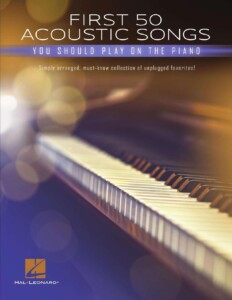 |
First 50 Acoustic Songs You Should Play On Piano simply arranged |
| First 50 Four Chord Songs You Should play on the piano Simply arranged, easy piano |
 |
First 50 Four Chord Songs You Should play on the piano Simply arranged, easy piano |
| First 50 Gospel Songs You Should Play On Guitar |
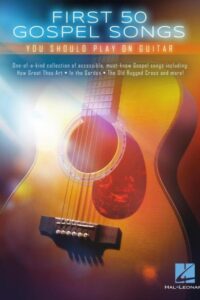 |
First 50 Gospel Songs You Should Play On Guitar Contents |
| First 50 Gospel Songs You Should Play On Piano (Easy Piano) |
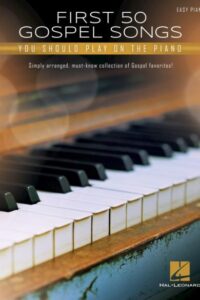 |
First 50 Gospel Songs You Should Play On Piano (Easy Piano) Contents |
| First 50 Jazz Classics You Should Play On Piano Easy Piano |
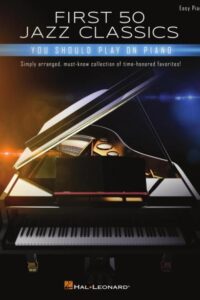 |
First 50 Jazz Classics You Should Play On Piano Easy Piano Contents |
| First 50 Jazz Standards You Should Play on Guitar |
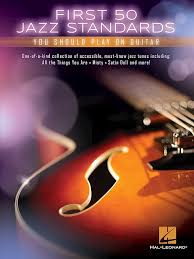 |
First 50 Jazz Standards You Should Play on Guitar |
| First 50 Jazz Standards You Should Play on piano Easy Piano |
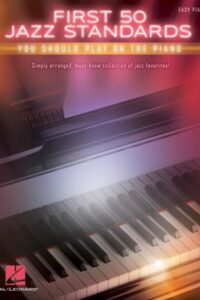 |
First 50 Jazz Standards You Should Play on piano Easy Piano |
| First 50 Latin Songs You Should Play On The Piano Easy Piano |
 |
First 50 Latin Songs You Should Play On The Piano Easy Piano |
| First 50 Love Ballads You Should Play On Piano |
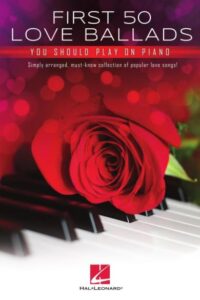 |
First 50 Love Ballads You Should Play On Piano |
| First 50 Movie Songs You Should Play On The Piano Easy Piano |
 |
First 50 Movie Songs You Should Play On The Piano Easy Piano |
| First 50 Movie Themes You Should Play On Piano Easy Piano |
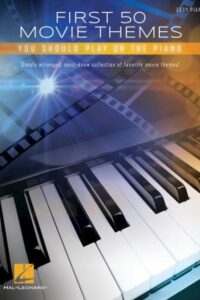 |
First 50 Movie Themes You Should Play On Piano Easy Piano |
| First 50 Piano Duets You Should Play One piano Four Hands |
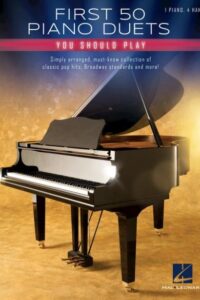 |
First 50 Piano Duets You Should Play One piano Four Hands contents |
| First 50 Piano Solos You Should Play – Easy Piano |
 |
First 50 piano solos |
| First 50 Pop Ballads You Should Play On The Piano Easy Piano |
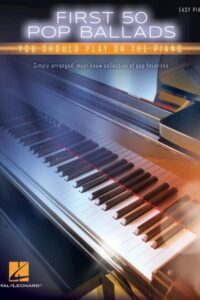 |
First 50 Pop Ballads You Should Play On The Piano Easy Piano |
| First 50 R&B Songs You Should Play On Piano Easy Piano Rhythm and blues R’n’B |
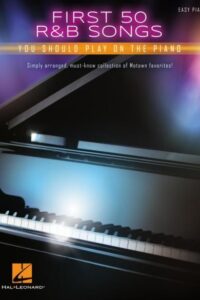 |
First 50 R&B Songs You Should Play On Piano Easy Piano |
| First 50 Songs You Should Fingerpick On Guitar with Tablature |
 |
First 50 Songs You Should Fingerpick On Guitar |
| First 50 Songs You Should Play on acoustic guitar |
 |
First 50 Songs You Should Play on acoustic guitar |
| First 50 Songs You Should Play On Drums |
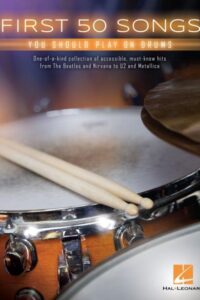 |
First 50 Songs You Should Play On Drums |
| First 50 Theater Songs You Should Play On Piano Easy piano |
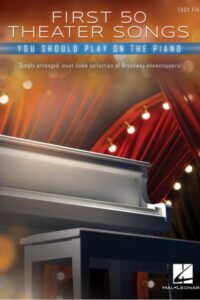 |
First 50 Theater Songs You Should Play On Piano Easy piano |
| First 50 TV Themes You Should Play On Piano Easy Piano |
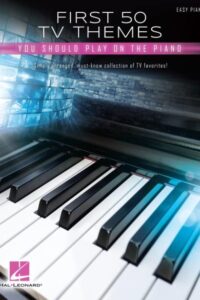 |
First 50 TV Themes You Should Play On Piano Easy Piano |
| First Book of Classical Music, A – Bergerac |
 |
First Book of Classical Music, A – Bergerac |
| First Book of Great Composers, A – Bergerac (with MP3 audio) |
 |
First Book of Great Composers, A – Bergerac |
| First Fake Book, Your – sheet music |
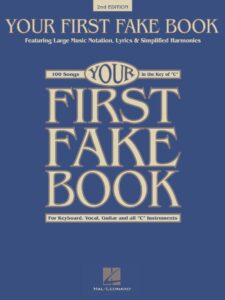 |
First Fake Book, Your – sheet music |
| First Jazz Standards – Beginning Solo Guitar with Tablature |
 |
FIRST jAZZ STANDARS |
| First Repertoire For Solo Guitar Book 1 |
 |
First Repertoire For Solo Guitar Book 1 sheet music pdf |
| First Repertoire For Solo Guitar Book 2 |
 |
First Repertoire For Solo Guitar Book 2 sheet music pdf |
| Fito Paez Al Lado Del Camino |
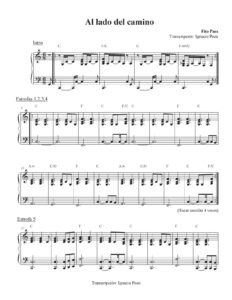 |
|
| Five Centuries Of Keyboard Music by John Gillespie (Book) |
 |
|
| Five For Fighting – 100 Years | ||
| Five For Fighting – Superman | ||
| Five Popular Persian Ballads Arr Lily Afshar For Solo Classic Guitar |
 |
Five Popular Persian Ballads Arr Lily Afshar For Solo Classic Guitar |
| Fivel Goes West – Dreams To Dream | ||
| Flamenco Método Elemental De Guitarra Flamenca Manuel Granados |
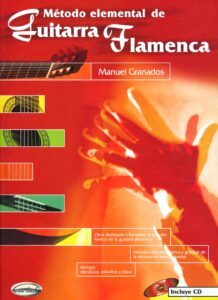 |
|
| Flamenco Guitar by Ivor Mairants Complete Method Part One |
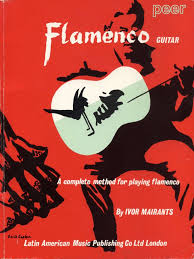 |
|
| Flamenco Guitar Method Vol. 1 and 2 (Complete) Gerhard Graf Martinez With Tabs And Notation |
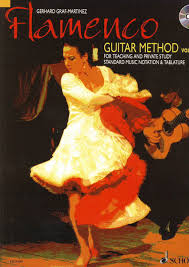 |
|
| Flamenco Guitar Solos by Juan Serrano – with audio MP3 |
 |
Flamenco Guitar Solos by Juan Serrano – with audio MP3 |
| Flamenco Guitar Transcriptions Guitar Exercises |
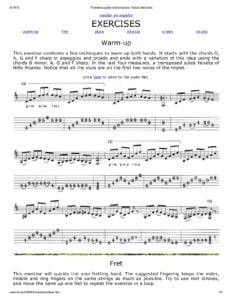 |
|
| Flashdance What A Feeling For 3 Part Mixed Chorus Piano Guitar |
 |
|
| Flashdance – Piano-Vocal-guitar songbook |
 |
Flashdance – Piano-Vocal-guitar songbook |
| Fleetwood Mac Guitar Anthology with Tablature |
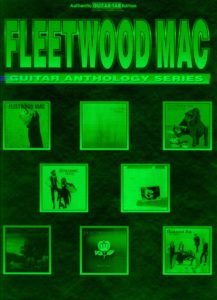 |
FLEETWOOD MAC |
| Fleetwood Mac The Best Of |
 |
Fleetwood Mac The Best Of |
| Fletcher Henderson Seven Come Eleven (Full Band Score) | Fletcher Henderson Seven Come Eleven (Full Band Score) | |
| Fleur D’Amour (Flower of Love) by George L. Cobb Hesitation Waltz |
 |
|
| Florence And The Machine Lungs |
 |
Florence And The Machine Lungs |
| Florence Foster Jenkins Music From The Motion Picture Soundtrack Vocal Piano |
 |
Florence Foster Jenkins Music From The Motion Picture Soundtrack Vocal Piano_compressed |
| Flower Power Songbook 70 Songs Of Peace And Love Piano Vocal Guitar |
 |
Flower Power Songbook 70 Songs Of Peace And Love Piano Vocal Guitar |
| Floyd Cramer Last Date Piano Solo |
 |
|
| Fly – Ludovico Einaudi Intouchables (Musescore File).mscz | ||
| Fly Me To The Moon – with acoustic Bass sheet music |
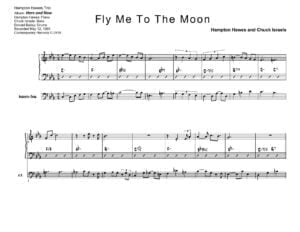 |
|
| Fly Me To The Moon (Bart Howard) Jazz Piano Solo arr. sheet music |
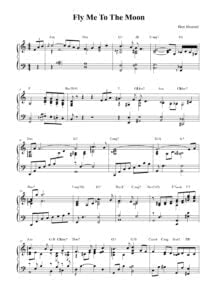 |
|
| Fly Me To The Moon (Easy Piano) | Fly Me To The Moon (Easy Piano) | |
| Fly Me To The Moon (Easy Piano) (Musescore File).mscz | ||
| Fly Me To The Moon (Guitar Chord Melody) (Musescore File).mscz | ||
| Fly Me To The Moon (Guitar Tabs) |
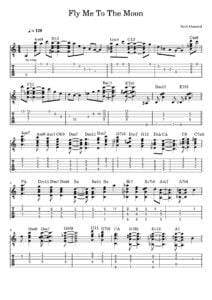 |
|
| Fly Me To The Moon (Guitar Tabs) (Musescore File).mscz | ||
| Fly me to the Moon (Jazz Standard) Guitar Tablature TABs |
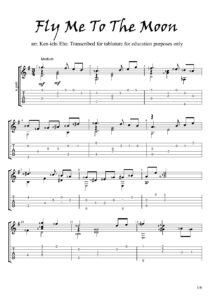 |
|
| Fly Me To The Moon (Musescore File).mscz | ||
| Fly Me To The Moon Neon Genesis Evangelion (Ending) (Musescore File).mscz | ||
| Folcloreishon, El Libro De La (Realbook Folklore Argentino A Ritmo De Jaz |
 |
|
| Folk Hymnal For The Now Generation Compiled By Norman Johnson And J.W. Peterson |
 |
|
| Folk Pop Songs For Easy Guitar With Notes Tab 40 songs |
 |
Folk Pop Songs For Easy Guitar With Notes Tab 40 songs |
| Folk Rock Guitar Bible with Tablature |
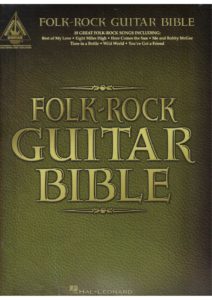 |
35 great folk-rock favorites, including: At Seventeen * Best of My Love * Eight Miles High * Fire and Rain * Here Comes the Sun * Leaving on a Jet Plane * Me and Bobby McGee * Teach Your Children * Time in a Bottle * Turn! Turn! Turn! (To Everything There Is a Season) * Wild World * You’ve Got a Friend * and more. |
| Folk Songs Of Eastern Europe |
 |
|
| Folksongs The Big Book Of Folk Songs Piano Vocal Guitar |
 |
Folksongs The Big Book Of Folk Songs Piano Vocal Guitar  |
| Foo Fighters – Learn To Fly | ||
| Foo Fighters Foo Fighters songbook |
 |
Foo Fighters Foo Fighters songbook |
| Foo Fighters The Colour And The Shape Guitar tab with lyrics |
 |
Foo Fighters The Colour And The Shape Guitar tab with lyrics |
| Fools Garden – Lemon Tree | ||
| Footprints – Wayne Shorter (Musescore File).mscz | ||
| For a few dollars more (Ennio Morricone) | ||
| For Your Eyes Only (Musescore File).mscz | ||
| Foreigner – Best of (Guitar Tabs) |
 |
Foreigner – Best of (Guitar Tabs) |
| Foreigner – Cold As Ice | ||
| Foreigner Cold As Ice Guitar TABs |
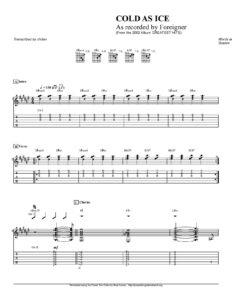 |
|
| Forever’s not enough (Sarah Geronimo) | ||
| Forgiven (Within Temptation) | ||
| Formula 1 Theme – Brian Tyler (Musescore File).mscz | ||
| Forrest Gump – Main Theme – Alan Silvestri | ||
| Forrest Gump – Main Title (Sheet music) by Alan Silvestri |
 |
Forrest Gump – Main Title (Sheet music) |
| Forrest Gump Suite – Feather Theme – Alan Silvestri |
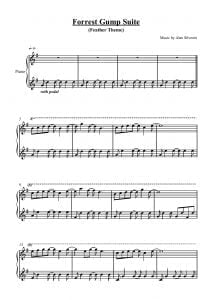 |
|
| Forrest Gump Suite – Silvestri Alan – Sheet Music (for Grand Piano) | Silvestri, Alan – Forrest Gump Suite – Sheet Music (for Grand Piano) | |
| Forrest Gump The Soundtrack OST Alan Silvestri |
 |
 |
| Fortnite Menu Music Season 1 2 Piano Cover Sheet Music | Fortnite Menu Music_Season_1_2_Piano_Cover_Sheet_Music | |
| Fortnite music compilation | Fortnite music compilation | |
| Fortnite Music Compilation (Piano Solo sheet music) | Fortnite Music Compilation (Piano Solo sheet music) | |
| Four Piano Blues (Nr 2) Aaron Copland (Musescore File).mscz | ||
| Four Hands – Secret Love Affair OST (Lee Nam Yeon ) | ||
| Four Piano Blues No. 4 – Copland (Musescore File).mscz | ||
| France Gall Livre D’or Vol 1 Partitions |
 |
France Gall Livre D’or Vol 1 Partitions |
| France Gall Livre D’or Vol 2 Partitions France Gall Chante Michel Berger |
 |
France Gall Livre D’or Vol 2 Partitions France Gall Chante Michel Berger |
| Francis Lai Concerto Pour La Find D’un amour (Easy Piano Solo, piano facile) Concerto For A Love Ending | Francis Lai Concerto Pour La Fin D’Un Amour Piano (Easy Piano) | |
| Francis Lai Concerto Pour La Find D’un amour (Piano Solo Arr.) Concerto For A Love Ending |
 |
|
| Francis Lai Les Meilleures Chansons (Album Songbook Piano Vocal Guitar) |
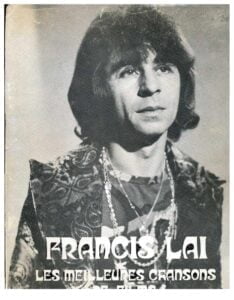 |
Francis Lai Les Meilleures Chansons (Album Songbook Piano Vocal Guitar)_compressed |
| Francis Lai – A Man And A Woman (Un homme et une femme) partition |
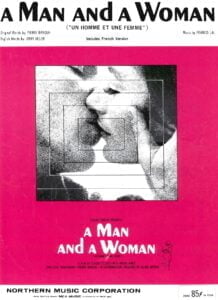 |
|
| Francis Lai – Bilitis Scène d’Amour (piano) |
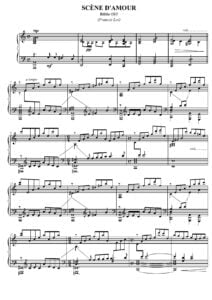 |
|
| Francis Lai – Concerto Pour La Find De L’amour (Piano Solo Arr.) Concerto For A Love Ending (Musescore File).mscz | ||
| Francis Lai – Le Voyou (Film Theme) |
 |
|
| Francis Lai – Les Meilleures Musiques de Francis Lai (partitions) |
 |
Francis Lai – Les Meilleures Musiques de Francis Lai (partitions) |
| Francis Lai – Love Story Theme (Guitar arr. sheet music with TABs) | Francis Lai – Love Story Theme (Guitar arr. sheet music with TABs) | |
| Françis Lai – Mayerling |
 |
|
| Francis Lai 13 Jours En France |
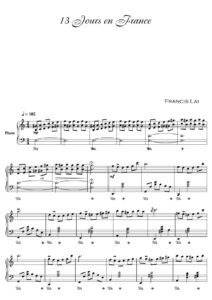 |
|
| Francis Lai Les Meilleures Chansons De Films. Album N. 2 |
 |
|
| Francis Lai Love Story – Theme (Piano Solo) | Love story | |
| Francis Lai Love Story Guitar Solo with TAB |
 |
|
| Francis Lai Love Story Piano Solo |
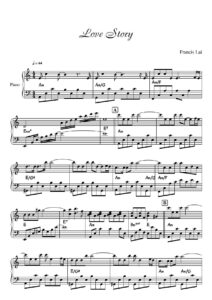 |
|
| Francis Lai Love Story Piano Vocal Guitar | Francis Lai Love Story Piano Vocal Guitar | |
| Francis Poulenc Improvisation No. 15 Hommage À Edith Piaf (Musescore File).mscz | ||
| Franck, César Op 18 Prelude Fugue and Variations (arr. piano Bauer) |
 |
|
| Franck, César Op 18 Prelude Fugue and Variations (arr. piano Friedman) | ||
| Franco Battiato The Best Of Spartiti |
 |
Franco Battiato The Best Of Spartiti |
| Franco Battiato – La Cura (Piano Vocals And Guitar Chords) (Musescore File).mscz | ||
| Franco Battiato – La Cura (Piano solo con parole) |
 |
|
| Franco Morone My Acoustic Blues Guitar With Embedded Mp3 Audio Tracks To Play Along with Tablature |
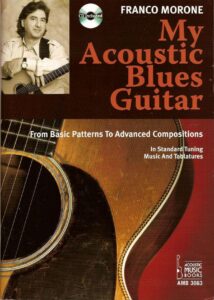 |
Franco Morone My Acoustic Blues Guitar With Embedded Mp3 Audio Tracks To Play Along with Tablature |
| Françoise Hardy 35 Succes partitions Piano Vocal Guitar chords |
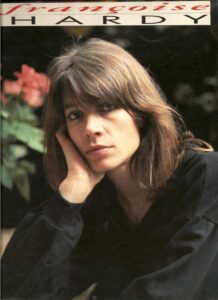 |
Françoise Hardy 35 Succes partitions Piano Vocal Guitar chords |
| Francoise Hardy Top Partitions (Sheet Music) Piano Vocal Guitar Chords |
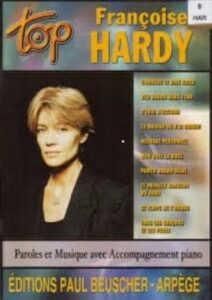 |
Francoise Hardy Top Partitions (Sheet Music) Piano Vocal Guitar Chords |
| Frank Feldman 12 Consolations For Solo Piano |
 |
|
| Frank Feldman Jazz Riffs For Piano |
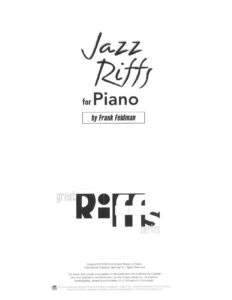 |
|
| Frank Ocean Channel Orange Piano Vocal Guitar |
 |
Frank Ocean Channel Orange Piano Vocal Guitar |
| Frank Sinatra – Anthology |
 |
Frank Sinatra Anthology |
| Frank Sinatra – As Time Goes By | ||
| Frank Sinatra – Fly Me To The Moon | ||
| Frank Sinatra – greatest hits (songbook) |
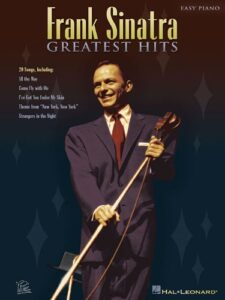 |
Frank Sinatra greatest hits |
| Frank Sinatra – Moonlight In Vermont | ||
| Frank Sinatra – My way – Sheet music | Frank-Sinatra-My-Way 1st page | |
| Frank Sinatra – New York New York | ||
| Frank Sinatra – One For My Baby | ||
| Frank Sinatra An Extraordinary Life (Spencer Leigh) Book |
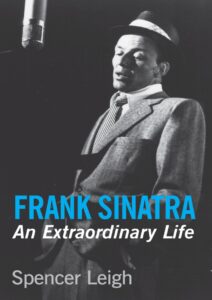 |
|
| Frank Sinatra Anthology Songbook Volume 2 |
 |
Frank Sinatra Anthology Songbook Volume 2 |
| Frank Sinatra Hans-Günter Heumann Pop Classics For Piano The Very Best Of Frank Sinatra Piano Vocal Guitar |
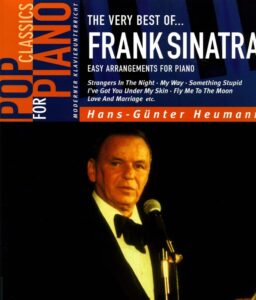 |
Frank Sinatra Hans-Günter Heumann Pop Classics For Piano The Very Best Of Frank Sinatra Piano Vocal Guitar |
| Frank Sinatra New York, New York Piano Solo | Frank Sinatra New York, New York Piano Solo | |
| Frank Sinatra Singin In The Rain |
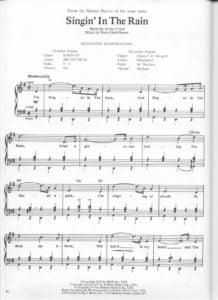 |
|
| Frank Sinatra, Rick Nelson The Very Thought Of You (Solo Guitar TAB) | Frank Sinatra, Rick Nelson The Very Thought Of You (Solo Guitar TAB) Sample | |
| Frank Zappa Apostrophe Guitar Tablature Recorded Guitar Versions |
 |
Frank Zappa Apostrophe Guitar Tablature |
| Frank Zappa by Barry Miles (Book) |
 |
|
| Frank Zappa Hot Rats Guitar Tab Songbook |
 |
Frank Zappa Hot Rats Guitar Tab Songbook |
| Frank Zappa Songbook Vol.1 Guitar Tabs |
 |
Frank Zappa Songbook Vol.1 Guitar Tabs |
| Frank Zappa The Frank Zappa Guitar Book |
 |
Frank Zappa |
| Frank Zappa The Real Frank Zappa Book |
 |
|
| Frankie Goes To Hollywood The Power Of Love |
 |
|
| Franz Ferdinand – Take Me Out | ||
| Franz Schubert Schwanengesang (transcr. Horn) |
 |
|
| Fred Harz Classical Jazz Guitar |
 |
Fred Harz Classical Jazz Guitar |
| Fred Hersch Rain Waltz (Piano Solo Transcription) Sheet Music |
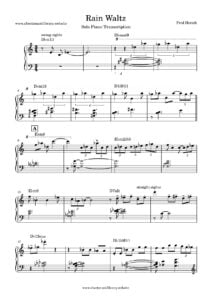 |
|
| Fred Hersch – Bill Conti’s For your eyes only (Piano Solo) | Fred Hersch – Bill Conti’s For your eyes only (Piano Solo) | |
| Fred Hersch – Desafinado Antonio Carlos Jobim partitura |
 |
|
| Fred Hersch – I’ll be seeing you (Piano Solo transcription) | Fred Hersch – I’ll be seeing you (Piano Solo transcription) | |
| Fred Hersch – Selected Compositions 1980-2005 | Fred Hersch – Selected Compositions 1980-2005 | |
| Fred Hersch And So It Goes |
 |
|
| Fred Hersch Billy Joel And So It Goes |
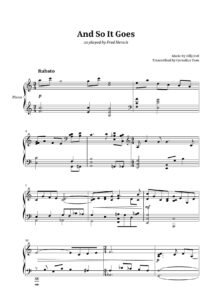 |
